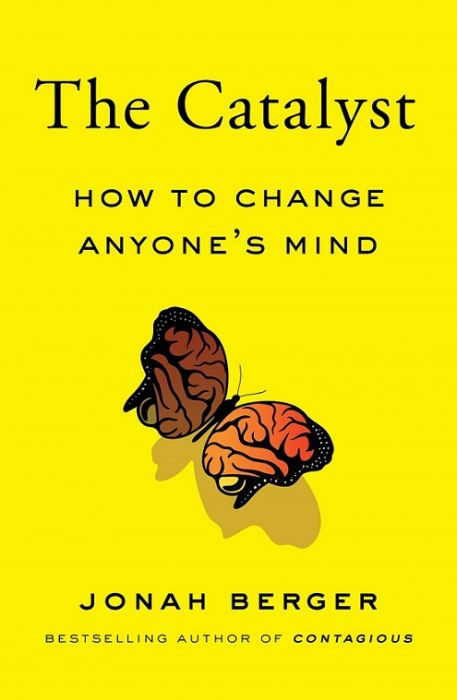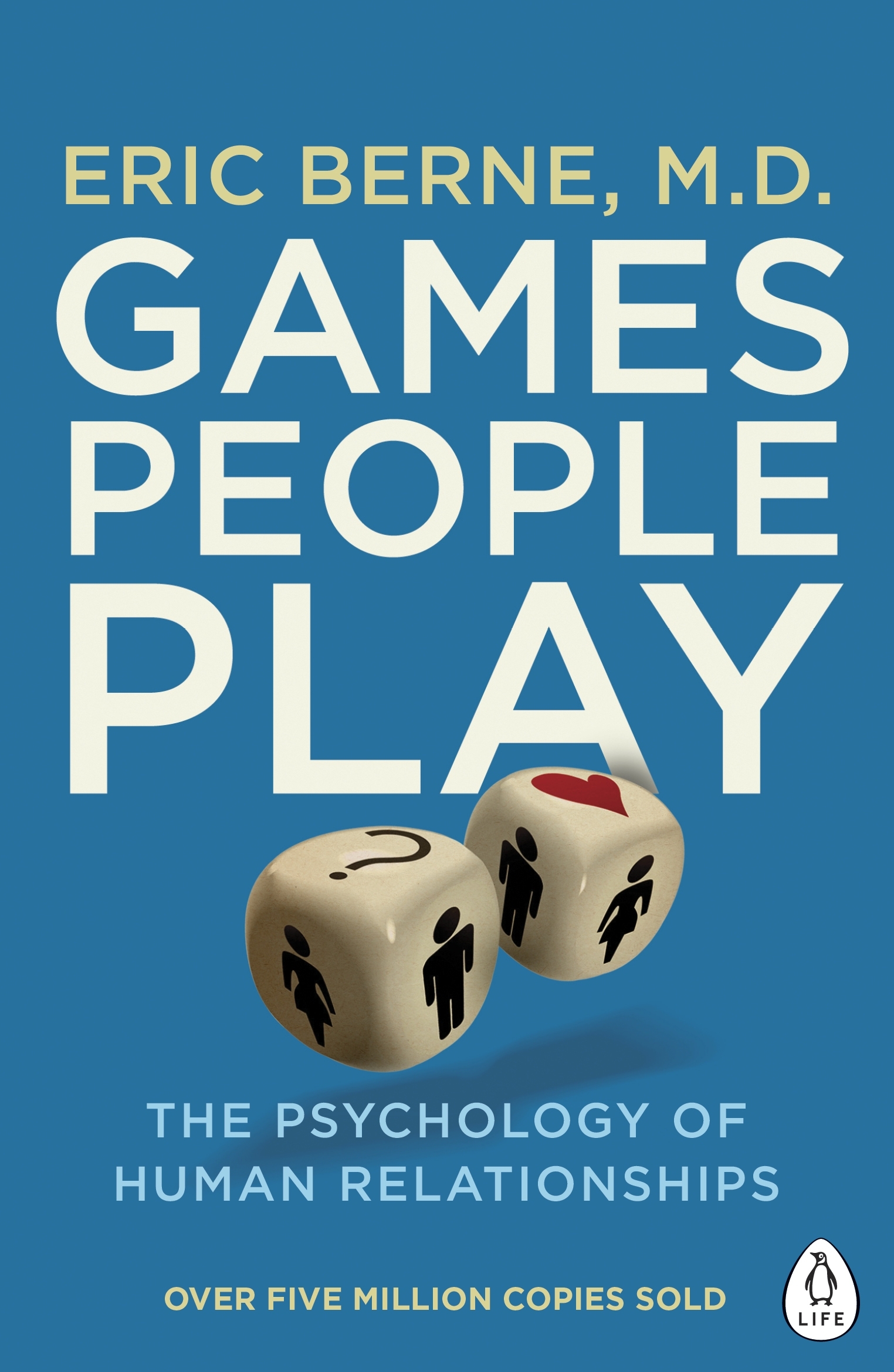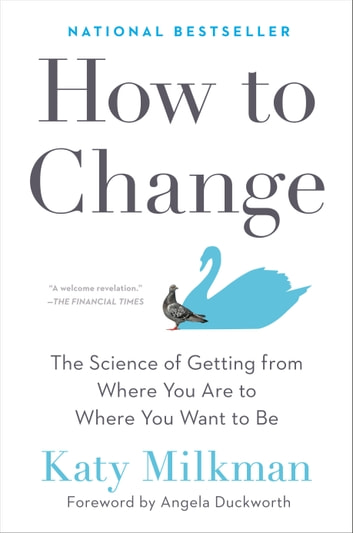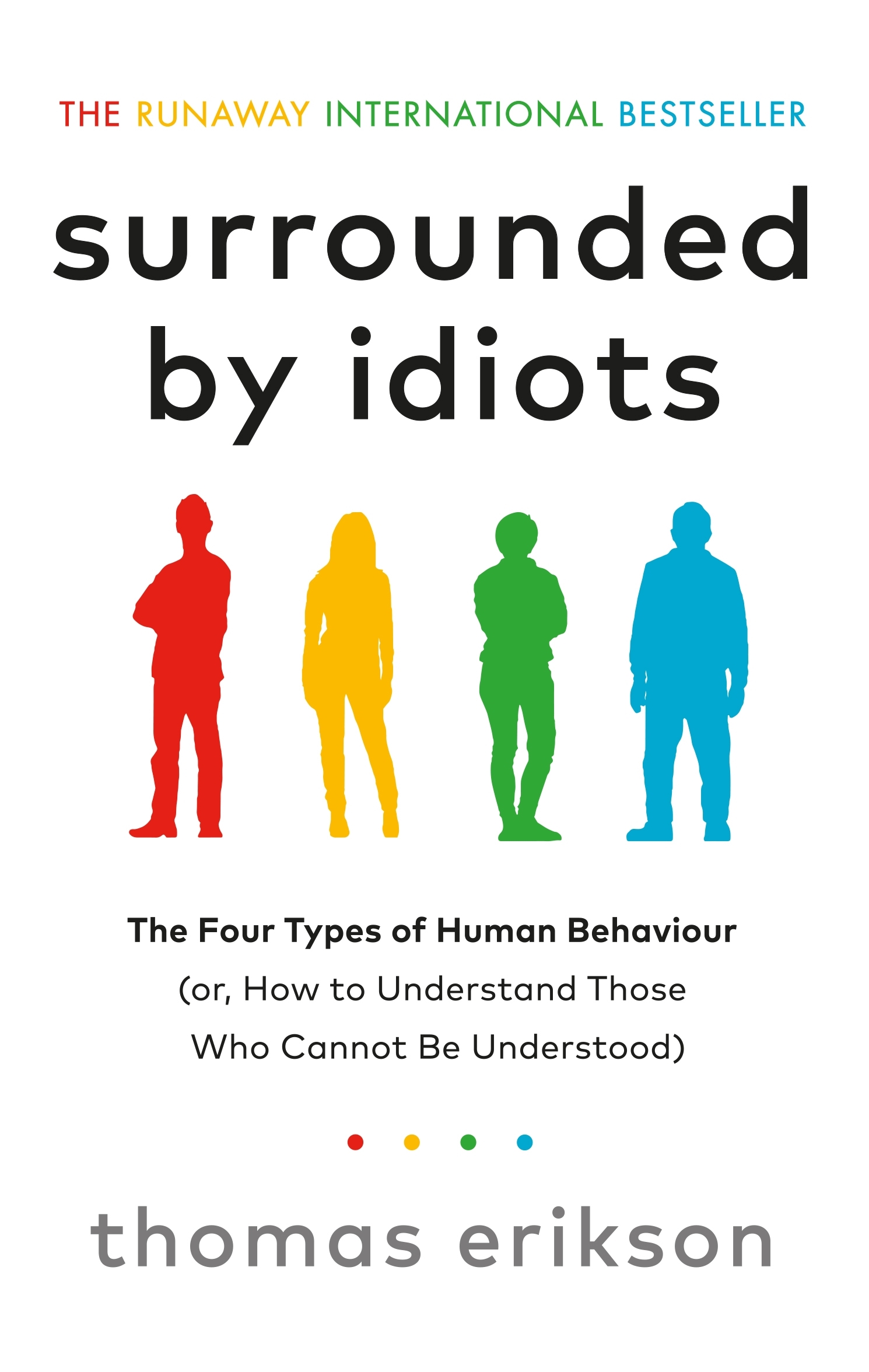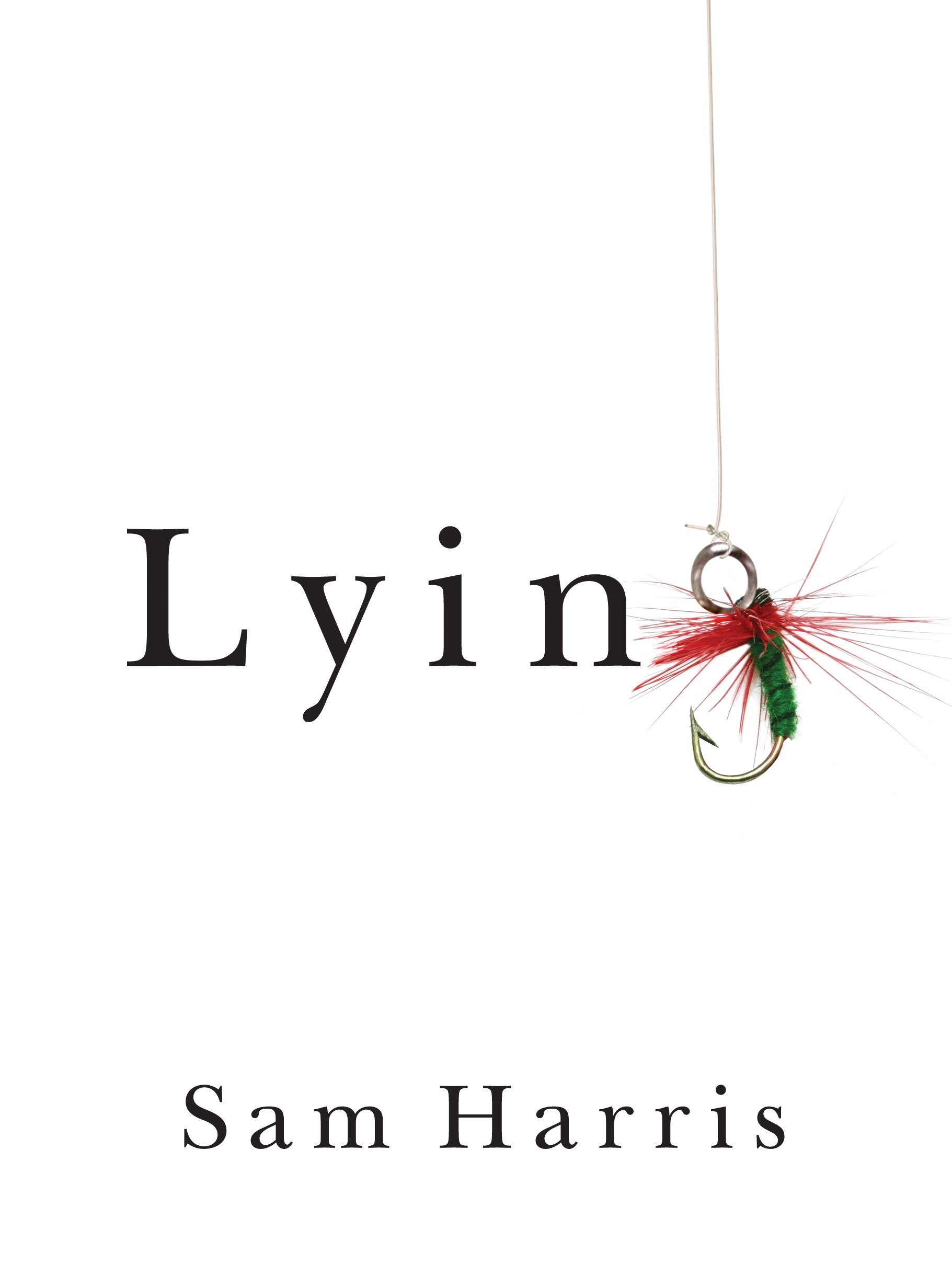Thinking Fast and Slow
by Daniel Kahneman
- Behaviour
- Ashto =
- Jonesy =
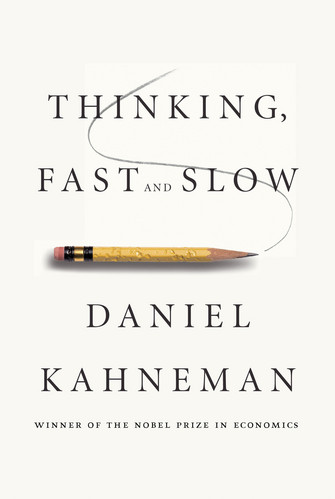
Thinking, Fast and Slow – by Daniel Kahneman
Thinking Fast and Slow is an eye-opening book jam-paced with useful content. Daniel Kahneman even won a Nobel Prize in 2002 for his work. The book refers to the interactions between what he terms ‘system 1’ and ‘system 2’ thinking.
System 1 is the ‘fast’ thinking. It’s what we may think of when we hear the word ‘intuition’. System 1 is constantly forming a view of the world around it and looking for any subtle changes. It is gullible and always seeking to make things true, so if System 2 is pre-occupied, we can be fooled into believing things that aren’t true.
System 2 is the ‘slow’ thinking. It is effortful, deliberate, structured thinking. System 2 is lazy, so prefers to adopt System 1 conclusions if it means it doesn’t have to work. But we use system 2 for any difficult or extended tasks that require a lot of brain power.
This is a long book, so we covered our favourite chapters that we thought were most applicable to everyday life. It’s well worth the read because it will show you the flaws in our thinking and the moments in which we can be fooled by our own mind into believing things that aren’t actually true.
If you like this book, you might enjoy some of our other episodes about books on psychology and behavioural economics, like: Predictably Irrational by Dan Ariely, Thinking in Bets by Annie Duke, or The Black Swan by Nassim Taleb.
Grab a copy of the book here: https://www.bookdepository.com/Thinking-Fast-and-Slow-Daniel-Kahneman/9780141033570/?a_aid=adamsbooks
Thinking, Fast and Slow
Here is a summary of the book!
A deeper understanding of judgements and choices requires a richer vocabulary than is available in every day language.
This book looks at human irrationality and vulnerabliity to biases through the lens of two systems, System 1 and System 2 thinking.
System 1
Operates automatically and quickly with little or no effort, and no sense of voluntary control. It effortlessly originating impressions and feelings that are main sources of the explicit beliefs and deliberate choices of system 2.
For example, it can:
- Detect that one object is more distant
- Detect hostility in a voice
- Drive a car on an empty road
- Find a strong move in chess
- Answer 2 + 2
System 1 has learned associations between ideas (capital of France e.g) and it has learned skills like reading and understand nuances of social situations.
System 2
Allocates attention to the effortful mental activities that demand it, including complex computations. The operations of System 2, are often associated with the subjective experience of agency, choice and concentration
Examples
- Brace for the starter gun in a race
- Focus attention on clowns in a circus
- Look for a woman in white hair
- Tell someone your phone number
- Fill out tax
- Park in a narrow space
In all the situations you must pay attention and you will perform less well or not at all, if you are not ready or if your attention isn’t directed appropriately.
The often used phrase “pay attention” is apt, you dispose a limited budget of attention that you can allocate to activities, and if you go beyond your budget you will fail.
ABOUT SYSTEM 2
System 2 Takes Effort
Defining feature of system 2 is that it’s operations are effortful and one of its main characteristics is laziness. A reluctance to invest more effort in than necessary. This is a big part of Thinking Fast and Slow.
Much like the electricity meter outside your house or apartment, the pupils offer an index of the current rate at which mental energy is used. The analogy goes deep. Your use of electricity depends on what you choose to do, whether light a room or toast bread. When you turn on the toaster, it takes all of the energy it needs and no more. Say if you were told to hold the 4 digits 9462 and your life depends on holding it for 10 seconds . No matter how much you want to life, you can exert as much effort in this task
As you become skilled in a task, its demand for energy diminishes. In the economy of action, effort is cost and the acquisition of skill.
A general law of least effort applies to cognitive as well as physical exertion. It asserts that if there are several ways of achieving the same goal, people will gravitate towards the least demanding course of action. One of the significant discoveries of cognitive psychologists in recent decades that switching from one task to another is effortful, especially under time pressure.
System 2 Gets Depleted
It is easy and quite pleasant to walk and think at the same time, but at extremes these can be competing for the limited resources of system 2
You can confirm this claim by a simple experiment. Ask someone to keep walking and compute 23x 78. They will almost certainly stop walking to think.
Evidence suggests that you are more likely to eat tempting chocolate cake when your mind is loaded with digits.
System 1 has more influence on behaviour when system 2 is busy. People who are cognitively busy are more likely to make selfish choices, use sexist language and make superficial judgements in social situations
Self control requires attention and effort.
Another way of saying this is that controlling thoughts and behaviours is one of the tasks that system 2 performs
The indications of depletion is highly diverse
- Deviating from ones diet
- Overspending on purchases
- Reacting aggressively to provocation
Study – “Proceedings of the National Academy of Sciences”
This study looked at 8 parole judges in Israel who spend entire days reviewing applications of patrol
The cases are presented in random order and judges spend about 6 minutes each time. For the judges, default decision is denial, with only 35% approved
The exact time of each was recorded – and the times of the judge’s food breaks. They found:
- Proportion of approved requests spikes against the time of the last food break
- After a meal 65% are granted
- Then it drops steadily to just about 0
The amazing conclusion was:
‘tired and hungry judges tend to fall back on the easier default position of denying requests for parole
ABOUT SYSTEM 1
The main function of System 1 is to maintain and update a model of your personal world which represents what is normal. The model is constructed by associations that link ideas of circumstances, events, actions and outcomes that co-occur with some regularity, either at the same time or within a relatively short interval. As these links are formed and strengthened, the pattern of associated ideas comes to represent the structure of the events in your life, and it determines your interpretation of the present as well as your expectations in the future
“How many animals of each kind did Moses take into the ark?”
The number of people who detect what is wrong in this question is so low it’s called the Moses illusion. The idea of animals going into the ark sets up a biblical context, and Moses is not abnormal in this context. You did not expect him, but mention of his name was not surprising. Replace Moses with George Bush and you will have a poor political joke, but no illusion
System 1 Jumps to Conclusions
Jumping to conclusions is efficient if the conclusions are likely to be correct and the cost of an occasional mistake is acceptable, and if the jump saves much time and effort. Jumping to conclusions is risky when the situation is unfamiliar, the stakes are high and there is no time to collect more information. These are situations in which intuitive errors are more probable which may be prevented by a deliberate intervention of System 2 . This is a core element of Thinking Fast and Slow.
System 1 does not keep track of alternatives that it rejects, or even of the fact that there were alternatives. Conscious doubt is the repertoire of System 2. It requires maintaining incompatible interpretations at the same time, which demands mental effort
What You See is All There Is (WYSIATI)
Consider the following:
“Will Mindik be a good leader? She is intelligent and strong”
The answer came quick – it was yes. You picked it based on very limited information. What if the next two pieces of information were corrupt and cruel?
You did not start by asking “what would I need to know before I formed an opinion about the quality of someone’s leadership?
Their research shows that participants who see one sided evidence are more confident of their judgements than those who saw both sides. WYSIATI facilitates that achievements of coherence and of the cognitive ease that causes us to accept the statement as true
It leads to a range of biases:
Overconfidence:
Neither the quality or quantity of evidence counts for much in subjective confidence. Our cognitive system suppresses doubt and ambiguity
Framing effects:
Different ways of presenting the same information invoke different emotions
“The odds of survival after one month are 90%” is more reassuring “mortality within one month is 10%”
Or 90% fat free, compared to 10% fat
Base rate neglect:
If the personality description is salient and vivid, the statistical fact almost certainly doesn’t’ come to your mind. If it has a good story to it, it doesn’t matter about the statistical probability
System 1 Answers an Easier/Different Question
The technical definition of heuristic is a simple procedure that helps find adequate, though often imperfect answers to difficult questions. People simplify the impossible task – when asked to judge probability, people actually judge something else and believe they judge probability
E.g Target question asked / heuristic question answered
How much would you contribute to save an endangered species? / How much emotion do I feel when I think of dying dolphins?
How popular will the president be in 6 months? / How popular is the president right now?
These all make up key ideas that relate to Thinking Fast and Slow.
HUMAN BIASES
LAW OF SMALL NUMBERS
A study of kidney cancer in 3141 counties of the USA reveals a remarkable pattern. The countries where it is lowest are mostly rural, sparsely populated and located. Most would easily think to infer that the low cancer rates are direct result of clean living of the rural lifestyle – no air pollution, no water pollution, access to fresh food without additives etc
Now consider the counties in which the cancer rates are highest. These are rural, sparsely populated and republican states. It is easy to infer the high cancer rates directly due to the poverty of rural areas. No access to quality healthcare, a high-fat diet and too much alcohol or tobacco. The rural lifestyle cannot explain both very high and very low incidence of kidney cancer
Imagine an urn filled with marbles
- Half are red half are white
- Large samples are more precise than small samples
- Small samples yield extreme results more often than large samples do
The associative machinery seeks causes and to weave a narrative.
Hot hands
We have misperceptions of randomness in basketball. The fact that players occasionally acquire a hot hand is generally accepted by players, coaches and fans. The inference is irresistible, they score 3 or 4 in a row and you cannot help form the causal judgement that the player is now hot, with a temporary increased propensity to score. Analysis of thousands of sequences of shots led to a disappointing conclusion. There is no such thing as a hot hand in professional basketball.
Some players are more accurate, but the sequences of successes and missed shots satisfies all the tests of randomness. The hot hand is a widespread cognitive illusion.
Statistics produce many observations that appear to beg for causal explanations but do not lend themselves to such explanations. Many facts of the world are due to chance. Causal explanations of chance events are inevitably wrong.
ANCHORS
Daniel once rigged a wheel of fortune to be 10 or 65, then asked two questions. This was before he wrote the book Thinking Fast and Slow.
Is the % of African nations among UN members larger or smaller than the number you wrote?
What is your best guess of the % of African nations in the UN?
Surely the wheel wouldn’t effect the answers? … But
The average estimates of those who saw 10 and 65 respectively were 25% and 45% !
This phenomenon is called the anchoring effect. There is a form that is a deliberate process of adjustment, an operation for system 2, and there is an anchoring effect that occurs by a priming effect, an automatic manifestation of system 1. It explains why you are going to drive faster moving from a Freeway onto smaller streets, or if a kid turns down the music in the room from an exceptionally high place, the ‘reasonable’ volume will be much higher due to the original anchor.
System 1 understands sentences by trying to make them true and the selective activation of compatible thoughts produces a family of systematic errors that make us gullible and prone to believe too strongly whatever we believe System 1 tries its best to construct a world in which the anchor number is the true number. This is one of the manifestations of associative coherence
Random anchors
The power of random anchors has been demonstrated in unsettling ways. German judges with an average of more than 15 year of experience first read a description of a woman who had been caught shoplifting, then rolled a pair of dice that was loaded to 3 or a 9.
As soon as the dice were came to a stop, the judges were asked who long should the sentence be
- Those who had rolled a 9 said they would sentence her to 8 months
- Those who rolled a 3 would sentence to 5 months
- The anchoring effect was 50%
Use and abuse of anchors
Anchoring effects explain why arbitrary rationing is an effective marketing ploy.
At a supermarket they had a promotion for Campbell’s soup at 10% off regular price
- Some days it had limit of 12 per person
- Some days it had no limit per person
Shoppers purchased an average of 7 cans when the limit was in force, twice as much!
Negotiating in a bazar
When you negotiate for the first time in Bali, the initial anchor has a powerful effect. If the other side has made an outrageous proposal, you should not come back with an equally outrageous counteroffer, creating a gap that will be too difficult to bridge in further negotiations. Instead you should make a scene, storm out or threaten to do so – make it clear to yourself and the other side – that you will not continue the negotiation with that number on the table
AVAILABILITY BIASES
The availability heuristic from Thinking Fast and Slow
Like other heuristics of judgement, substitutes one question for another: you wish to estimate the size of a category or the frequency of n event, but you report an impression of the ease in which instances come to mind.
A plane crash that attracts media coverage will temporarily alter your feelings about the safety of flying. Accidents are on your mind for a while, after you see a car burning on the side of the road you conclude the world is a more dangerous place
Study into contribution to peace in marriages
When people are asked:
“How large was your personal contribution to keeping the place tidy, in percentages?”
The self estimated contributions add to more than 100%. The explanation is a simple availability bias:
- Both remember their own individual efforts and contributions much more clearly than those of the other, and the difference in availability leads to a difference in judged frequency
- Same bias when collaborative teams are asked to mention the contribution of their share
ASSOCIATIVE COHERENCE
Benefit and risk (associative coherence)
There is a high negative correlation between level of benefit and risk they attributed to technologies (they should be somewhat mutually exclusive… Like nuclear power has high benefit high risk…)
When people are favourably disposed towards a technology, they rated it as offering large benefits and imposing little risk. When they disliked a technology, they could think only of its advantages, and few advantages came to mind.
“The emotional tail wags the rational dog” – Jonathan Haidt
The affect heuristics simplifies our lives by creating a world that is much tidier than reality. Good technologies have fewer costs in the imaginary world we inhabit, bad technologies have no benefits and all decisions are easy
AVAILABILITY CASCADE
This was a really intriguing idea presented in the book Thinking Fast and Slow by Daniel Kahneman. The importance of an idea is often judged by the fluency (and emotional charge) with which the idea comes to mind. An availability cascade is a self-sustaining chain of events which may start from media reports of a relatively minor event, lead up to public panic and large scale government action
- On some occasions, a media story about a risk catches the attention of a segment of the public which becomes aroused and worried
- The emotional reaction becomes a story in itself, prompting additional coverage in the media, which in turn produces greater concern and involvement
- The cycle is sometimes sped deliberately by availability entrepreneurs individuals, or organisations who work to ensure continual flow of worrying news
- The danger is increasingly exaggerate as the media compete for attention grabbing headlines
- Scientists and others who try to dampen the fear attract little attention, most of it hostile
- The issue becomes politically important because it’s on everyone’s mind, and the response of the political system is guided by the intensity of public sentiment
- Other risks, and other ways the resources could be applied for public good all have faded into the background
PROBABILITY NEGLECT
We have the inability to deal with small risk. We either ignore them all together or give them far too much weight – nothing in between. The amount of concern is not adequately sensitive to the probability of harm, you are imagining the numerator – the tragic story you see on the news – and not thinking about the denominator
The combination of probability neglect and the social mechanisms of availability cascades leads to gross exaggeration of minor threats, sometimes with important consequences.
PROBABILITY NEGLECT + AVAILABILITY CASCADE = TERRORISM OPPORTUNITY
Terrorists are the best practitioners of inducing availability cascades. The number of causalities from terror attacks is very small relative to other causes of deaths. It doesn’t come close to coronary heart disease, but the gruesome images endlessly repeated in the media is readily available.
Terrorism speaks directly to system 1 from Thinking Fast and Slow.
BASE RATE NEGLECT from Thinking Fast and Slow
Here is a simple puzzle from Thinking Fast and Slow:
“Tom W is a graduate student. Rank what he is from 1 – 6”
- Business admin
- Computer science
- Engineering
- Law medicine
- Library science
- Physical science
What is most likely?
The question is easy. You knew immediately the relative size of enrollment in the different feilds as the key to the solution. To decide whether the marble is green or red, all you need to know is how many marbles of each colour are in the urn
Next comes a task that has nothing to do with base rates:
Tom is high intelligent, lacking creativity. Needs order and clarity. Writing is dull. He corny. Has little sympathy. Doesn’t enjoy interacting with others. But has a deep moral sense
The narrative skews what everyone chooses as his profession, to computer science or engineering – you probably did as well.
Tom W was intentionally designed as an anti base rate character, a good fit to small fields and poor fit to the most populated specialties.
System 1 generates an impression of similarity without intending to do so. Although it is common, prediction by representativeness is not statistically optimal. Michael Lewis’s Moneyball is about the inefficiency of this mode of prediction. Professional baseball scouts traditionally forecast the success of possible players in part by their build and look. Billy Beane made the unpopular decision to overrule his scouts and to select players based on statistics instead of past performance. The players the A’s picked were inexpensive, because other teams had rejected them by not looking the part. The team got excellent results at low cost
For example
You see a person reading the New York times on the New York Subway… Which is a better bet?
- She has a PhD
- She does not have a college degree
Representativeness would tell you to bet on the PHD. But the second is a better option, there are many more non graduates than PhDs who ride NY subways
If you are asked about a woman who is a shy poetry lover, studies Chinese Literature or Business Admin, choose business admin.
CONJUNCTION FALLACY
Linda is 31, single, outspoken, bright, majored in philosophy, deeply concerned with issues of social justice and took part in anti nuclear demonstrations.
- Linda is a teacher in elementary school
- Linda works in a bookstore and takes yoga classes
- Linda is active in the feminist movement
- Linda is a psychiatric worker
- Linda is a bank teller
- Linda is an insurance salesperson
- Linda is a bank teller and is active in the feminist movement
Is Linda a bank teller… Or more like a bank teller as part of the feminist movement?
Everyone agrees Linda fits the category of feminist bank teller better than that of bank tellers. Adding that detail to the description makes for a more coherent story
This is a failure of system 2. Participants had the fair opportunity to detect the relevance ofa logical rule, since both outcomes were included in the same ranking
- 89% of undergraduates violated the logic of probability
- You’d think those in Stanford graduate class would do better
- But 85% of them also said feminist bank teller more likely than bank teller
This was very controversial as all the famous university students were fucking it up.
REGRESSION TO THE MEAN
Danny was once training air force that rewards improve performance better than punishment of mistakes
Someone from the crowd disagreed. On many occasions I’ve praised flight cadets for clean execution of a aerobatic maneuver. The next time, they usually do worse… On the other hand I scream at cadets after bad execution, and they usually do better. What he observed actually, was regression to the mean
It was due to random fluctuations in the quality of performance. Naturally he commended it after it was better than average, but the cadet was lucky to get so far above average, and there was only downside. The officer than praised him, cadet performed worse, and the officer weaved a story about the effect of his comment. The more extreme the original score, the more regression we expect, because an extremely good score suggests a very lucky day
HALO EFFECT
Good stories provide a simple and coherent account of people’s actions and intentions. You are always ready to interpret behaviour as a manifestation of general propensities and personality traits – causes that you readily match to effects. If we think the baseball pitcher is handsome – we are likely to rate him better at throwing the ball
Halos can also be negative.
The halo effect helps keep explanatory narratives simple and coherent by exaggerating the consistency of evalutions: good people only do good things and bad people are all bad.
The statement “Hitler loved dogs and little children” is shocking no matter how many times you hear it, because any trace of kindness in someone so evil violates the expectations of the halo effect.
NARRATIVE FALLACY
Nassim Taleb in the Black Swan introduced the narrative fallacy to describe how flawed stories of the past shape our views of the world and our expectations of the future. Narrative fallacies arise inevitably from our continuous attempt to make sense of the world. The explanatory stories that people find compelling are simple, are concrete rather than abstract, assign a larger role to talent, stupidity, and intentions rather than to luck, and focus on a few striking events that happened rather than the countless events that failed to happen.
A compelling narrative fosters an illusion of inevitability. Consider how google turned into the giant of the technology industry. Two creative graduate students in the computer science department at Stanford came up with a superior way of searching on the internet. A detailed history would specify the decisions of the founders, but for our purposes it suffice to say every choice they made had a very good outcome. A more complete narrative would describe the actions of the firms that google defeated
The competitors would appear blind, slow and inadequate. This is a simple good story. IF you flesh it out, you could probable write a book on what made google succeed, with very valuable business lessons
Unfortunately there is good reason to believe your belief in this story is largely illusory. The ultimate test of an explanation is whether it would be predictable in advance. The human mind does not deal well with non events. The fact that many of the important events that did occur involve choices further tempts you to exaggerate the role of skill and underestimate the part that luck played in the outcome
At work here is that powerful WYSIATI rule
- You cannot help dealing with the limited information you have as if it were all there is to know
- You build the best possible story from the information available to you, and if it is a good story, you believe it
Paradoxically it is easier to construct a coherent story when you know little, when there are fewer pieces to fit into the puzzle.
HINDSIGHT BIAS
According to the book Thinking Fast and Slow, many psychologists have studied what happens when people change their mind.
Choosing a topic on which minds are completely not made up – say the death penalty – the experimenter can measure attitudes
- Then they get persuaded with pro or con
- Then they measure the attitudes again, they usually are somewhat persuaded
- Then asked to give the opinion from beforehand, which is actually very difficult
When asked to reconstruct former beliefs, they retrieve current ones instead.
Your inability to reconstruct past beliefs will inevitably cause you to underestimate the extent to which you were surprised by past events. It’s also known as “I knew it all along effect”, or hindsight bias.
Hindsight bias has pernicious effects on the evaluations of decision makers. It leads observers to assess the quality of a decision not by whether the process was sound but by whether its outcome was good or bad. Consider a low risk surgical intervention, in which an unpredictable accident caused the patients death. The jury after the fact, will believe the operation was risky
Hindsight is especially unkind to decision makers who act as agents for others – like CEOs of coaches. We are prone to blame decision makers for good decisions that worked out badly, and give them too little credit for successful moves that appear obvious only after the fact.
FORMULAS ARE BETTER THAN INTUITION in Thinking Fast and Slow
It is generally agreed that the effect vintage can be due to variations in weather during the grape growing season
Best wines are usually when summer is warm and dry and it also helped by wet springs
A scientist converted the knowledge into a statistical formula that predicts the price of a wine – at any particular age – by the weather, average temp of the growing season and the amount of rain at harvest time, and the total rainfall at the previous winter His formulas predict much better than all the experts do.
Why are experts inferior to algorithms?
Experts try and think outside the box and make complex combinations of features. Complexity may work, but it often reduces validity, simple combinations are usually better. Several studies show that human decision makers are much worse than formulas.
Experienced radiologists who evaluate X-rays as normal or abnormal contradict themselves 20% of the time. The widespread inconsistency is probably due to extreme context dependancy of System 1.
We know from studies about priming that are unnoticed has a substantial influence on our thoughts (they could have heard about someone dying of breast cancer on a podcast the day before).
Research shows that to maximise predictive accuracy, final decisions should be left to formulas – especially in low validity environments
Example – for marital stability (Dawes formula)
Marital stability = Frequency of love making – frequency of quarrels
This comes form the book Thinking Fast and Slow
PLANNING FALLACY from Thinking Fast and Slow
Planning fallacy is – a bias of project planning that:
-
- Are unrealistic close to best case scenarios
- Could be improved by consulting the stats of similar cases
E.g – in July 1997 the Scottish parliament estimated hte building of Edinburgh would cost 40 million pounds
- By June 1999, the budget was then 109 million
- In April 2000, the regulators put a 195 million “cap on costs”
- By November 2001, they demanded an estimate of hte final cost , which was set to 241 million
- The estimated cost rose twice in 2002, and ended at 294.6 milllion
- It rose 3 more times in 2003, reaching 375 million by June
- Building was completed for 431 million in 2004
Or e.g kitchens:
Survey of home owners who redo their kitchens predict $18,658 but in fact pay 38,769
The greatest responsibility of avoiding the planning fallacy lies with the decision makers who approve the plan. If they do not recognize the need for an outside view, they commit a planning fallacy
Taking the outside view (another’s opinion with experience) is the cure to the planning fallacy.
PROSPECT THEORY
You are offered a gamble on the toss of a coin
If the coin shows tails, you lose 100
If it shows heads, you win 150
Is this attractive?
For this you need to balance the psychological benefit of getting $150 against the cost of losing $100. For most people, the fear of losing $100 is greater than the hope of gaining $150.
You can measure your loss aversion by asking yourself, what is the smallest gain to balance an equal chance of losing $100.
Good poker players need to be close to 1:1 and exploit the other players who are asymmetric.
LOSS AVERSION & ENDOWMENT EFFECT
In labour negotiations, it is well understood by both sides that the reference point is the existing contract and that the negotiations will focus on mutual demands for concessions relative to the reference point. The role of loss aversion in bargaining is also well understood: making concessions hurts. If you move jobs or locations, you remember the new features minus that of the old. Loss aversion gives preference to the status quo.
Suppose you had a ticket for a rock concert of a sold out – your favourite band:
- You buy it at the regular price of $200, which was tough
- But then an avid fan offers $500 a few days before hand
- Would you sell?
Most people lowest selling price is about $3000.
SUNK COST FALLACY
The emotions that people attach to the state of their mental accounts are not acknowledged in standard economic theory. If you buy a movie ticket and it sucks, the fact that you pay for it shouldn’t matter.. You should just walk out.
This is the sunk cost fallacy.
A rational decision maker is interested only in the future consequences of current investment, justifying earlier mistakes shouldn’t be of concern.
Imagine a company that has spent 50 million on a project. The project is now behind schedule and already spent 50 million , but an additional investment of 60 million is required. It should be considered a 60 million project now, and cancelled if it’s actually going to bring less than 50 million return.
The sunk cost fallacy keeps people for too long in poor jobs, unhappy marriages and unpromising research projects.
Thinking Fast and Slow: Two Selves
EXPERIENCING SELF VS THE REMEMBERING SELF
Experience and memory – how it the idea of ‘the two selves’ relates to Thinking Fast and Slow
How much can experienced utility be measured? A British economist measured this with the hedonometer
- Kept buzzing at different times of the day to ask how the moment is
Study also of painful colonoscopy
Patient A
Quick painful experience
Patient B
Same intensity and length of pain… But towards the end slowly diminishes down
When procedure was over, all were asked how was the pain and surprisingly it didn’t equal the hedonometer totals
The analysis revealed two findings:
Peak end rule:
The retrospective rating was predicted by the average between the worst moment and the final moment.
Duration neglect:
Duration of the procedure had no effect whatsoever on the ratings of total pain
If the objective is to reduce the patients memory of pain, addiing additional pain at the end that trails off would be a good strategy. If it is to reduce actual pain experience, do it quickly (but they’ll have an awful memory)
The experiencing self asks – “does it hurt right now?”
The remembering self saks “how was it, on the whole?”
Thinking Fast and Slow
That’s our major takeaways from the legendary book: Thinking Fast and Slow.




